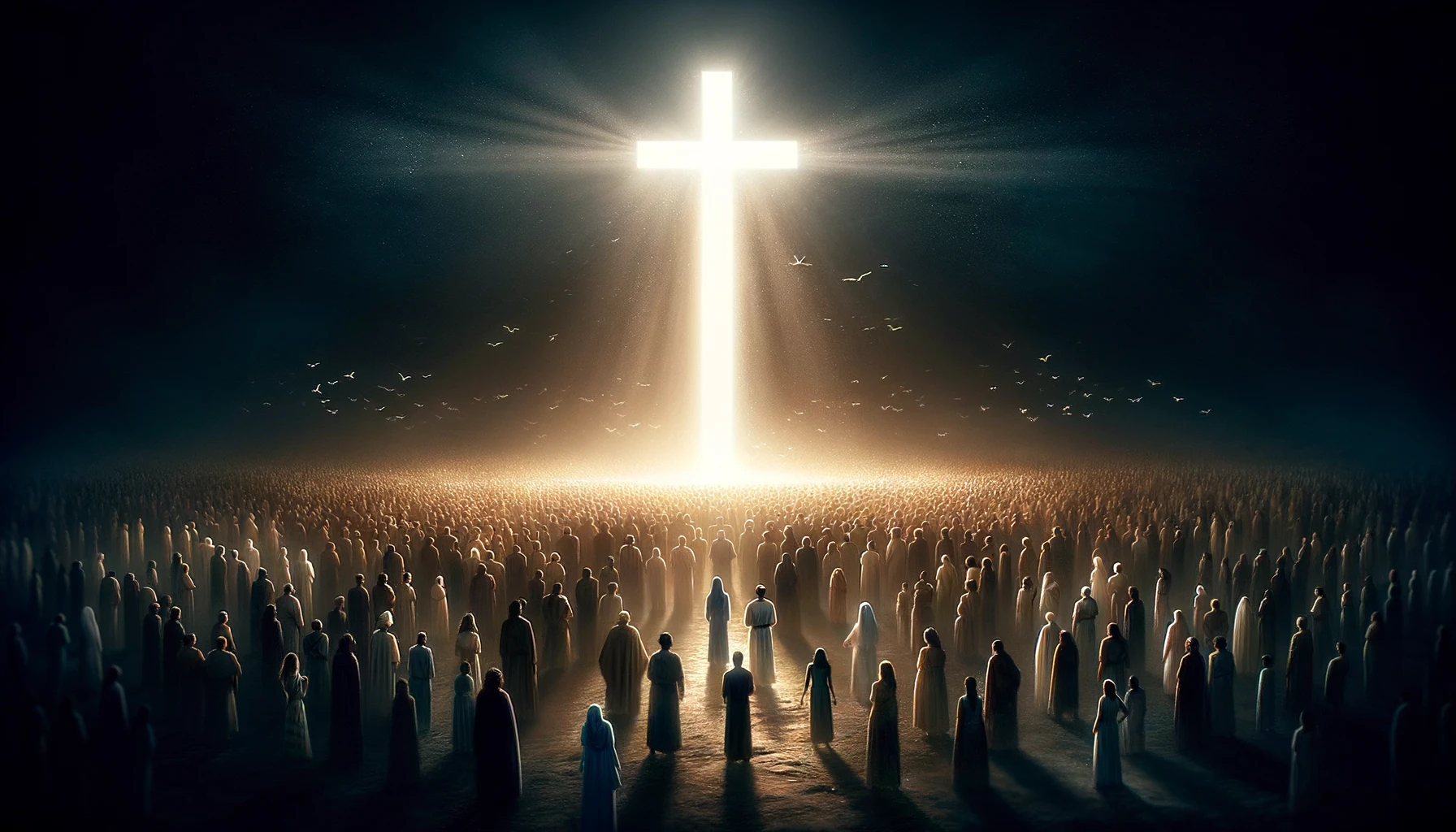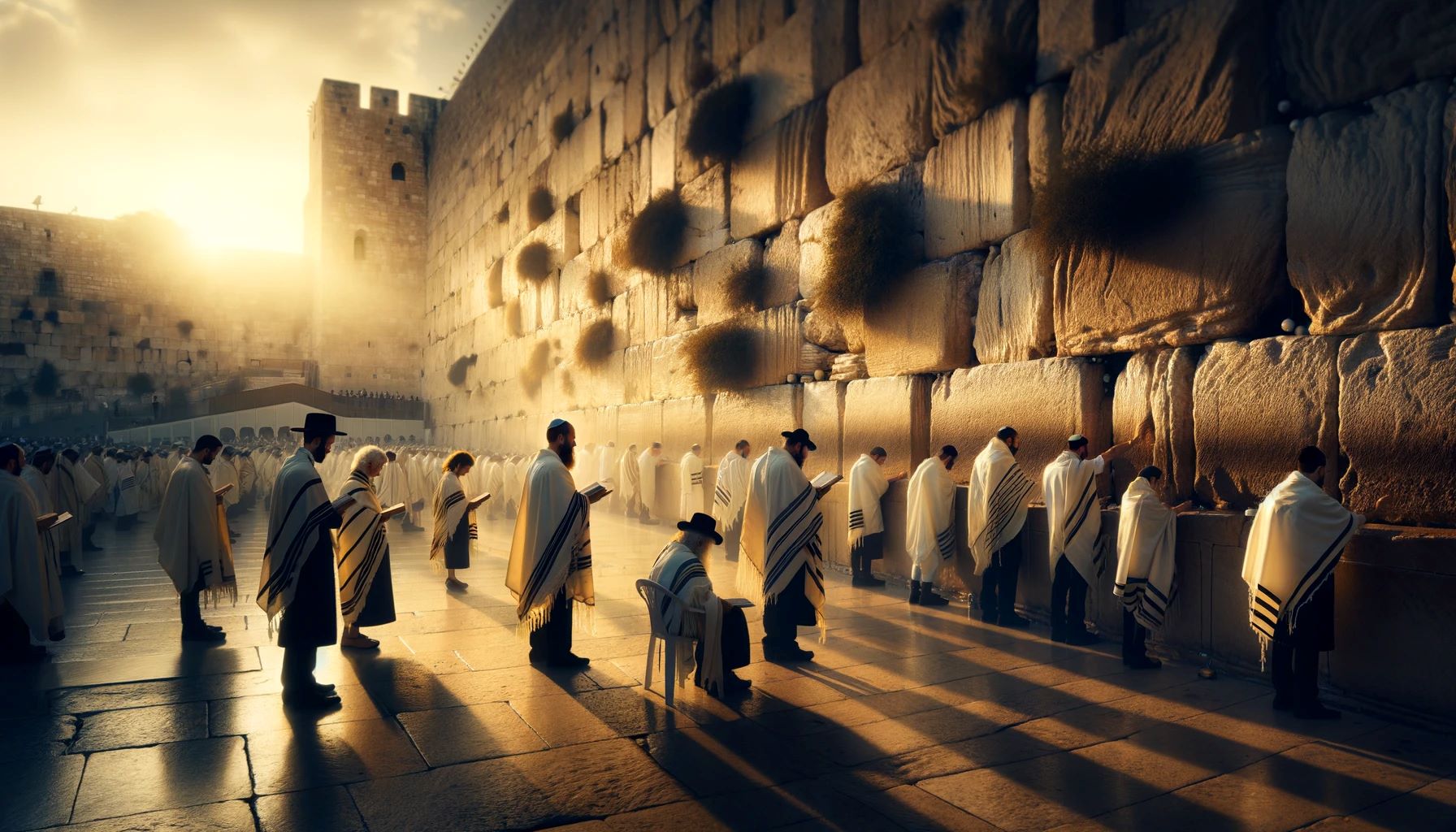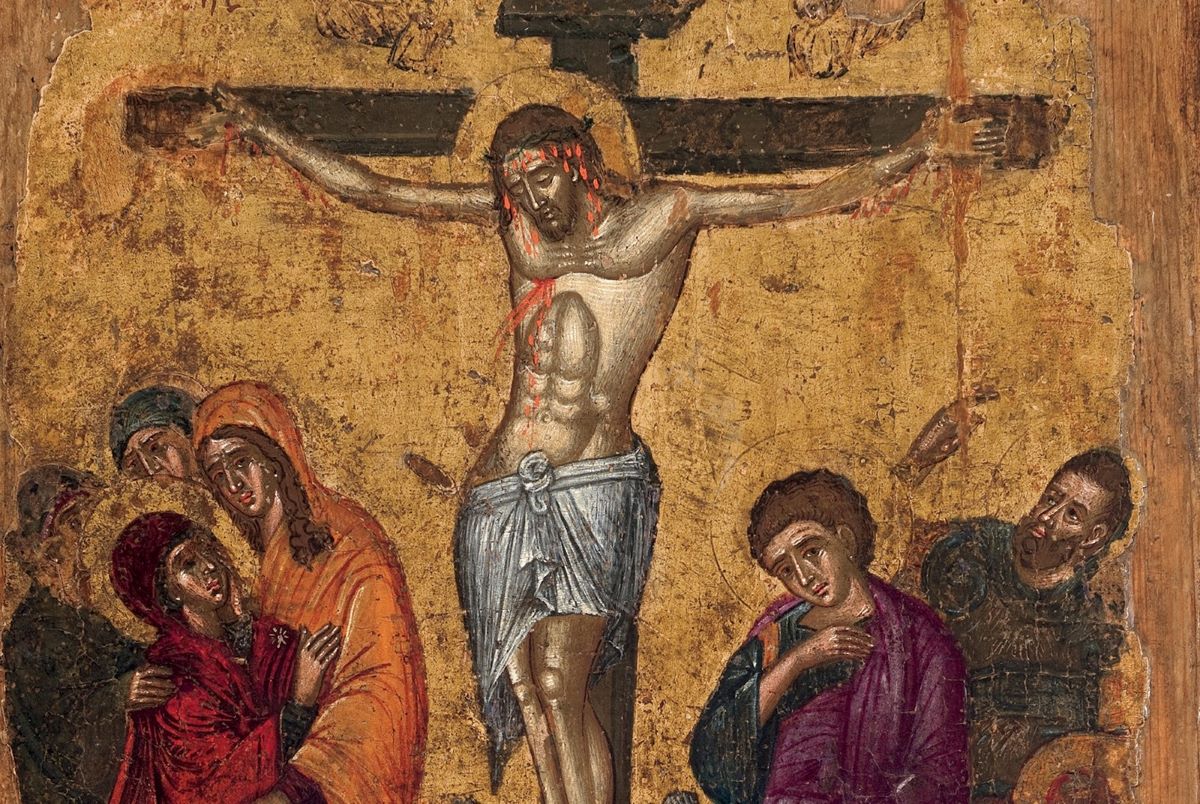Home>Theology and Spirituality>Which Is The Correct Description Of The Atonement Listed In Isaiah 53


Theology and Spirituality
Which Is The Correct Description Of The Atonement Listed In Isaiah 53
Published: February 9, 2024
Peter Smith, Editorial Director at Christian.net, combines deep insights into faith, politics, and culture to lead content creation that resonates widely. Awarded for his contributions to religious discourse, he previously headed a major organization for religious communicators, enhancing dialogue on faith's societal impacts.
Discover the correct description of the Atonement as listed in Isaiah 53. Explore the theological and spiritual significance of this profound passage. Gain insights into the Atonement's meaning and relevance.
(Many of the links in this article redirect to a specific reviewed product. Your purchase of these products through affiliate links helps to generate commission for Christian.net, at no extra cost. Learn more)
Table of Contents
Introduction
Isaiah 53 is a profound and enigmatic chapter in the Hebrew Bible, often referred to as the Old Testament. It is a passage that has sparked intense theological discussions and debates for centuries. At the heart of these discussions lies the concept of atonement, a fundamental aspect of many religious traditions. The chapter is particularly significant in Christian theology, as it is often interpreted as a prophetic foreshadowing of the sacrificial death and redemptive work of Jesus Christ.
The text of Isaiah 53 presents a vivid portrayal of a suffering servant, whose afflictions and ultimate sacrifice are described in poignant detail. This depiction has been a focal point for theologians, scholars, and believers seeking to understand the nature and purpose of atonement. The chapter's rich imagery and profound symbolism have given rise to a myriad of interpretations, each offering unique insights into the nature of divine redemption and the relationship between suffering and salvation.
As we delve into the historical context, various interpretations, and the significance of the suffering servant in Isaiah 53, we will embark on a journey of exploration and contemplation. This chapter invites us to ponder the profound mysteries of atonement and redemption, offering a glimpse into the depths of divine love and the transformative power of sacrificial suffering. Through our exploration of Isaiah 53, we will gain a deeper understanding of the complexities and nuances of atonement, and the profound implications it holds for our spiritual and moral lives.
Historical Context of Isaiah 53
Isaiah 53 is situated within the larger context of the Book of Isaiah, a collection of prophetic writings attributed to the 8th-century BCE prophet Isaiah. The book is renowned for its powerful oracles, vivid imagery, and profound theological insights. Isaiah 53, in particular, is nestled within the section often referred to as "Deutero-Isaiah" or Second Isaiah, which spans from chapters 40 to 55. This portion of the book is believed to have been composed during the Babylonian exile, a tumultuous period in ancient Israel's history.
The historical backdrop against which Isaiah 53 emerged is crucial for understanding its themes and significance. The Israelites found themselves in exile, grappling with the trauma of displacement, the collapse of their homeland, and the erosion of their national identity. It was in this crucible of suffering and uncertainty that the prophetic voice of Isaiah spoke with poignant relevance.
The suffering described in Isaiah 53 resonated deeply with the Israelites' own experiences of affliction and displacement. The chapter's portrayal of a suffering servant bore a striking resemblance to the collective suffering of the exiled community. The profound empathy and solidarity expressed in the text offered a message of hope and resilience amid despair.
Furthermore, the historical context of Isaiah 53 is intertwined with the broader narrative of Israel's covenant relationship with God. The chapter's themes of redemption, vicarious suffering, and ultimate vindication are deeply rooted in the covenantal theology of the Hebrew Bible. The suffering servant's redemptive role is depicted as integral to God's salvific plan for humanity, echoing the enduring covenantal promises of restoration and renewal.
By situating Isaiah 53 within its historical milieu, we gain a deeper appreciation for the profound resonance of its message. The chapter's themes of suffering, redemption, and divine faithfulness are imbued with the lived experiences and collective memory of a people navigating the complexities of exile and yearning for restoration. This historical context enriches our understanding of Isaiah 53 as a timeless testament to the enduring hope and transformative power of divine atonement.
Different Interpretations of the Atonement in Isaiah 53
The enigmatic verses of Isaiah 53 have sparked a myriad of interpretations regarding the nature and significance of atonement. These interpretations have been shaped by diverse theological perspectives, historical contexts, and exegetical approaches, offering a rich tapestry of insights into the profound mysteries of divine redemption.
-
Suffering as Vicarious Atonement: One prevalent interpretation of Isaiah 53 views the suffering servant as a vicarious atonement figure, whose afflictions and sacrificial death are understood as a redemptive act on behalf of humanity. This perspective, embraced within Christian theology, sees the suffering servant as prefiguring the sacrificial death of Jesus Christ, whose atoning work is believed to bring about reconciliation between humanity and God.
-
National Atonement and Restoration: Within Jewish exegetical traditions, Isaiah 53 has been interpreted as a portrayal of the collective sufferings and ultimate vindication of the nation of Israel. The suffering servant is seen as emblematic of the people of Israel, enduring affliction on behalf of the nations, and ultimately serving as a catalyst for the restoration and redemption of the Jewish people.
-
Moral Exemplar and Ethical Atonement: Some interpretations emphasize the ethical dimensions of the suffering servant's role, portraying the servant as a moral exemplar whose endurance of suffering serves as a model for ethical living and compassionate solidarity. This perspective underscores the transformative power of empathetic suffering in fostering moral renewal and communal reconciliation.
-
Universal Atonement and Inclusive Redemption: Isaiah 53 has also been interpreted through the lens of universalism, emphasizing the inclusive and expansive nature of divine atonement. The suffering servant's redemptive mission is seen as extending beyond particularistic boundaries, embracing all of humanity in a profound gesture of inclusive love and universal reconciliation.
These diverse interpretations of atonement in Isaiah 53 reflect the depth and complexity of the chapter's themes, inviting contemplation and dialogue across religious traditions and theological perspectives. The multiplicity of interpretations underscores the enduring relevance of Isaiah 53 as a profound meditation on the nature of suffering, redemption, and the transformative power of divine atonement.
The Suffering Servant
The portrayal of the suffering servant in Isaiah 53 stands as a poignant and enigmatic figure, shrouded in profound mystery and profound theological significance. The evocative imagery woven throughout the chapter paints a vivid portrait of a servant who endures affliction, rejection, and ultimately, sacrificial death. This portrayal has been the subject of intense scrutiny and contemplation, giving rise to diverse interpretations across religious and theological traditions.
At the heart of the depiction of the suffering servant lies a profound paradox: a figure of apparent vulnerability and suffering, yet possessing a redemptive agency of transformative power. The servant's afflictions are described in vivid detail, evoking a sense of empathy and solidarity with human suffering. The poignant imagery of one "pierced for our transgressions" and "crushed for our iniquities" resonates with themes of vicarious atonement and redemptive sacrifice, inviting contemplation on the profound interplay between suffering and salvation.
The suffering servant's role as a redemptive agent has been a focal point of theological reflection and debate. Within Christian traditions, the servant is often interpreted as a prefiguration of Jesus Christ, whose sacrificial death is seen as the ultimate expression of divine atonement and reconciliation. The servant's willingness to bear the burdens of human transgression and suffering is viewed as a profound manifestation of divine love and solidarity with humanity.
In Jewish exegetical traditions, the identity of the suffering servant has been a subject of ongoing inquiry and interpretation. The servant is often seen as emblematic of the collective experiences of the nation of Israel, enduring suffering and persecution throughout history. The servant's redemptive mission is intertwined with the destiny of the Jewish people, serving as a symbol of hope and resilience amid adversity.
The enigmatic portrayal of the suffering servant in Isaiah 53 transcends narrow categorizations, inviting contemplation on the universal dimensions of suffering, redemption, and the transformative power of sacrificial love. The servant's enduring relevance as a symbol of empathy, solidarity, and redemptive agency continues to inspire profound theological reflection and spiritual contemplation across diverse religious and cultural contexts.
The profound resonance of the suffering servant's portrayal in Isaiah 53 serves as a timeless testament to the enduring mysteries of atonement and the transformative power of redemptive suffering. This enigmatic figure invites us to ponder the depths of divine love and the profound implications of sacrificial solidarity, offering a glimpse into the profound mysteries of suffering and salvation.
The Atonement and Redemption
The profound themes of atonement and redemption permeate the evocative tapestry of Isaiah 53, inviting contemplation on the transformative power of sacrificial suffering and the enduring hope of divine restoration. At the heart of the chapter lies a profound meditation on the interplay between human transgression, vicarious atonement, and the redemptive agency of divine love.
The concept of atonement, rooted in the Hebrew word "kippur," conveys the profound idea of reconciliation and restoration. Isaiah 53 portrays the suffering servant as one who bears the burdens of human iniquity, enduring affliction and rejection as a redemptive act of vicarious atonement. The servant's willingness to bear the weight of human transgression embodies a profound expression of divine solidarity and redemptive love, offering a glimpse into the transformative power of sacrificial suffering.
Central to the theme of atonement in Isaiah 53 is the profound interplay between suffering and redemption. The servant's afflictions are depicted as a catalyst for healing and restoration, evoking themes of divine compassion and redemptive renewal. The poignant imagery of one "wounded for our transgressions" and "bruised for our iniquities" underscores the profound connection between the servant's suffering and the redemptive liberation of humanity from the shackles of sin and estrangement.
Furthermore, the theme of redemption in Isaiah 53 encompasses the broader narrative of divine restoration and renewal. The servant's sacrificial role is portrayed as integral to God's salvific plan for humanity, offering a pathway to reconciliation and spiritual renewal. The redemptive mission of the suffering servant embodies a profound vision of divine restoration, inviting contemplation on the transformative power of sacrificial love in bringing about healing and reconciliation.
The profound resonance of atonement and redemption in Isaiah 53 transcends narrow theological boundaries, offering a profound meditation on the enduring hope of divine reconciliation and the transformative power of redemptive suffering. The chapter's evocative imagery and profound symbolism invite us to ponder the depths of divine love and the enduring promise of restoration, offering a timeless testament to the enduring mysteries of atonement and the transformative power of redemptive love.
This section provides a comprehensive exploration of the profound themes of atonement and redemption in Isaiah 53, offering a glimpse into the transformative power of sacrificial suffering and the enduring hope of divine restoration.
Read more: What Is Atonement
Conclusion
In conclusion, the enigmatic and profound chapter of Isaiah 53 stands as a timeless testament to the enduring mysteries of atonement and the transformative power of redemptive suffering. The historical context, diverse interpretations, and the evocative portrayal of the suffering servant invite us into a contemplative journey that transcends narrow theological boundaries. Isaiah 53's themes of vicarious atonement, redemptive agency, and the transformative power of sacrificial love resonate across religious and cultural traditions, offering profound insights into the complexities of human suffering and the enduring hope of divine restoration.
The historical context of Isaiah 53, situated within the tumultuous backdrop of the Babylonian exile, enriches our understanding of the chapter's themes and imagery. The resonance of the suffering servant's portrayal with the collective experiences of the exiled community underscores the profound empathy and solidarity expressed in the text, offering a message of hope and resilience amid despair.
The diverse interpretations of atonement in Isaiah 53 reflect the depth and complexity of the chapter's themes, inviting contemplation and dialogue across religious traditions. Whether viewed through the lens of vicarious atonement, national restoration, ethical exemplarship, or universal redemption, the chapter's enduring relevance transcends narrow doctrinal boundaries, offering profound insights into the universal dimensions of suffering and redemption.
The portrayal of the suffering servant in Isaiah 53 stands as a poignant and enigmatic figure, embodying the paradox of redemptive vulnerability and transformative agency. The servant's enduring relevance as a symbol of empathy, solidarity, and redemptive love continues to inspire profound theological reflection and spiritual contemplation across diverse religious and cultural contexts.
The profound themes of atonement and redemption in Isaiah 53 offer a profound meditation on the transformative power of sacrificial suffering and the enduring hope of divine restoration. The chapter's evocative imagery and profound symbolism invite us to ponder the depths of divine love and the enduring promise of reconciliation, offering a timeless testament to the enduring mysteries of atonement and the transformative power of redemptive love.
In essence, Isaiah 53 beckons us to contemplate the profound mysteries of atonement and redemption, offering a glimpse into the transformative power of sacrificial love and the enduring hope of divine restoration. As we navigate the complexities of human existence, the enigmatic figure of the suffering servant in Isaiah 53 stands as a timeless testament to the enduring mysteries of atonement and the transformative power of redemptive love.














